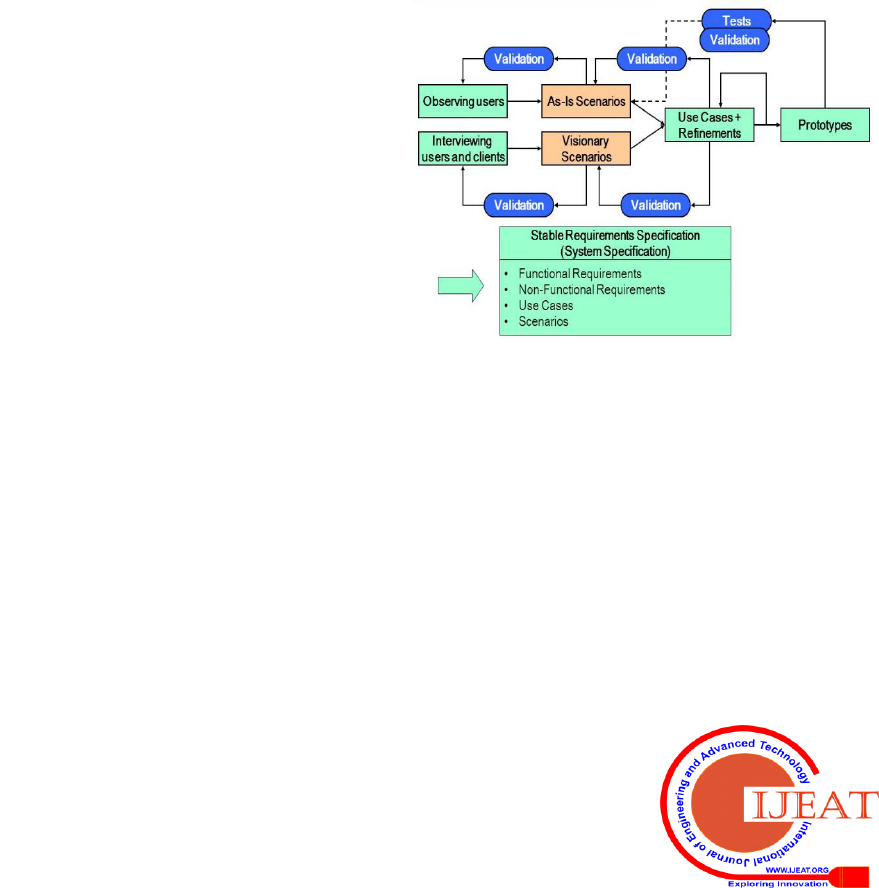
International Journal of Engineering and Advanced Technology (IJEAT)
ISSN: 2249 – 8958, Volume-9, Issue-1, October 2019
3809
Published By:
Blue Eyes Intelligence Engineering
& Sciences Publication
Retrieval Number: A9833109119/2019©BEIESP
DOI: 10.35940/ijeat.A9833.109119
M. Aqeel Iqbal, Asadullah Shah, Tehmina Karamat ullah Khan
Abstract –The social and collaborative nature of requirements
elicitation process bases its core dependency on aptitude,
attitudes, and personality characteristics of its participants. The
participant’s personality characteristics are directly related with
their personality traits, which can be categorized using different
personality assessment models. The MBTI personality assessment
model has been used successfully for the assessment of
personality of software engineers since last few decades. In this
article, the personality traits for requirements elicitation teams
have been predicted using MBTI personality assessment model,
on the basis of their industry demanded job descriptions/tasks
and major soft skills. The article presents a complete personality
prediction process using a systematic approach based on major
soft skills mapping with job descriptions, personality attributes
and personality traits. The obtained results show that
extraversion and feeling personality traits are the most suitable
personality traits for requirements analysts/engineers who are
assigned the task of requirements elicitation. The obtained results
are very much aligned with the already published scholar’s work
for software engineer’s personality assessment and development
team composition.
Keywords – Requirements Elicitation, RE Teams Personality,
Requirements Analyst Personality, MBTI Personality Traits,
Personality Traits, Personality traits Prediction
I. INTRODUCTION
Requirements Elicitation is considered as one of the most
important processes carried-out during requirements
engineering phase. The requirements elicitation is first stage
of requirements engineering process in which product
requirements are gathered from its intended users by using
different types of elicitation techniques. The requirements
elicitation team is responsible to explore the sources of
requirements and identify the product stakeholders [1]. The
team is also responsible to select an appropriate elicitation
technique and elicit the requirements, negotiate with users to
resolve the requirements conflicts. At the end, the team
notes the elicited requirements to make initial requirements
notebook that will be later on converted into formal
requirements specifications document.
Revised Manuscript Received on October 15, 2019.
Mr. M. Aqeel Iqbal, Kulliyah of ICT, International Islamic
University, Malaysia. (Email: bhatti.aqeel@live.iium.edu.my)
Dr. Asadullah Shah, Kulliyah of ICT, International Islamic
University, Malaysia. (Email: asadullah@iium.edu.my)
Ms. Tehmina Karamat ullah Khan, Kulliyah of ICT, International
Islamic University, Malaysia. (Email: tkarama[email protected])
Consider the figure-1, which represents the inner process of
requirements elicitation along with all of its internal stages
and tasks. The complete process of requirements elicitation
is highlighted from left to right direction in the figure to
show the sequence of activities carried-out. Initially the
requirements elicitation team uses appropriate elicitation
techniques like structured or unstructured interviews of
users and clients to gather the requirements from the product
users. Similarly, sometimes it becomes necessary to apply
and active or passive observations based techniques to
understand the user requirements. If analysts use
observation based techniques to gather the requirements,
then the user stated stories are transformed into As-Is-
Scenarios to extract the use cases from them for further
modeling of functional requirements.
Figure-1: Requirements Elicitation Process
However, if the analyst use interview based elicitation
techniques, then the users descriptions are translated into
analyst based visionary scenarios to extract the use cases
from them for further modeling of functional requirements.
In both cases, the obtained use cases are iteratively analyzed
and mapped with system requirements to refine them to get
concrete function requirements with precise scope. As-Is-
Scenarios are then mapped with observations while
Visionary Scenarios are mapped with interviewed contents
to perform their cross validation. Similarly, the use-cases
obtained are also validated with As-Is-Scenarios or
Visionary Scenarios depending upon they were obtained
from either observations or interviews.
Predicting Most Productive Requirements
Elicitation Teams using MBTI Personality Traits
Model
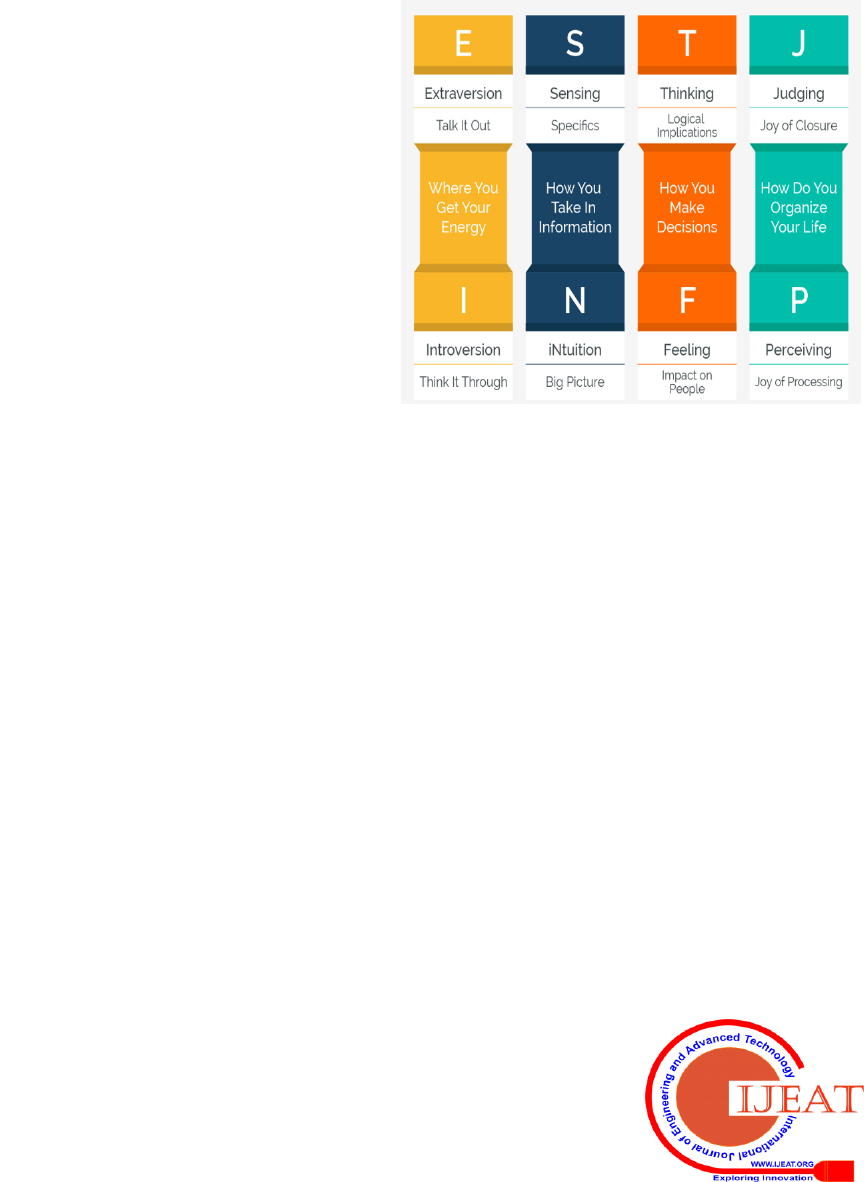
Predicting Most Productive Requirements Elicitation Teams using MBTI Personality Traits Model
3810
Published By:
Blue Eyes Intelligence Engineering
& Sciences Publication
Retrieval Number: A9833109119/2019©BEIESP
DOI: 10.35940/ijeat.A9833.109119
Once the use cases have been finalized for initial iterations,
the complicated candidate use-cases are prototyped to
clarify their objectivity and functionality. Sometimes all
internal scenarios of use-cases are prototyped but sometimes
only selected internal scenarios are prototyped depending
upon the criticality and complexity of use-cases. Prototypes
are then tested and validated with As-Is-Scenarios, which
also compensate for visionary scenarios. This process of
requirements elicitation works iteratively with each
successive iteration better finalizing the requirements than
its predecessor iteration. During this iterative process of
requirements elicitation, we get functional requirements,
non-functional requirements, product use-cases and
scenarios. The obtained functional requirements, non-
functional requirements, use-cases and scenarios later on
become the part of software requirements specifications
document. The process of requirements elicitation is full of
different kinds of human centered tasks and activities. The
researchers and practitioners have developed many
requirements elicitation techniques in order to cater the
effective requirements elicitation process [2]. The
requirements elicitation techniques are envisioned to
provide a way and guidance for both the elicitor and other
stakeholders in requirements elicitation process in order to
avoid the “blank slate syndrome”. The requirements
elicitation techniques can be categorized as traditional
techniques, cognitive techniques, group techniques and
contextual techniques with respect to their context of
conduct [3].
The traditional techniques are those generic techniques,
which remained in use in software engineering since its
inception, even when the process of requirements elicitation
was not well known. These techniques have been adopted in
software engineering from other domains of engineering and
social sciences. The most commonly used traditional
techniques may include interviews, questionnaires, task
analysis, domain analysis and introspection. The cognitive
techniques include a series of techniques originally
developed for knowledge gathering. These techniques aim
to elicit requirements by representing and structuring the
knowledge of stakeholders in terms of how they see both the
problem and solutions domains. The most commonly used
cognitive techniques may include card sorting, laddering
and repertory grids. The group techniques aim to foster
stakeholder agreement and buy-in, while exploiting team
dynamics. They typically require various stakeholders
working together in order to generate ideas and
specifications for the target system. The most commonly
used group techniques may include brainstorming,
requirements workshop, focus groups and group meetings.
The contextual techniques have been utilized for the
requirement elicitation as an alternative to both traditional
and cognitive techniques. These techniques focus on
requirements gathered directly from the context in which the
target system will eventually exist in real-life. The most
commonly used contextual techniques may include
ethnography, observation, protocol analysis and prototyping.
Myers-Briggs Type Indicator (MBTI) is a self-report
catalogue being designed to recognize the personality type
of a person, his/her strengths, and aptitude preferences. The
MBTI questionnaire was originally developed by Isabel
Myers and her mother Katherine Briggs based on their
research work with Carl Jung's theory of personality types
[4]. The MBTI personality traits classification is based on
recognition of four major groups of oppositely paired
personalities. These four groups include Extrovert vs
Introvert, Sensing vs. Intuition, Thinking vs. Feeling and
Judging vs. Perceiving as is shown in figure-2.
Figure-2: MBTI Personality Traits
In this personality assessment scheme, each pair defines an
aptitude orientation of a person towards his natural tendency
of actions and response in daily life activities [5]. Hence,
each pair of traits defines a scaled value of attitude
orientation of a person like more extrovert or less extrovert.
The attitude of being a less extrovert personality is
refereeing to an introvert personality. Similarly remaining
all pairs define a different set of personality attitudes and
their inclination towards more or less value in the pair [4, 5].
If we look at the figure-2 given below, we can see that
extrovert (E) vs introvert (I) personality traits pair refers to
the aspect of “Where you get your energy”. In addition, the
extrovert personality refers to aspect of “Talk it out” while
its counterpart introvert refers to aspect of “Think it
through” to get their energy. Similarly, the next personality
traits pair is sensing (S) vs Intuition (N) that refers to the
aspect of “How you take in information”. In addition, the
sensing personality refers to “Specifics” while intuition
personality refers to “Big picture” to take their information
from different sources. Similarly, the next personality traits
pair is thinking (T) vs feeling (F) that refers to the aspect of
“How you make decisions”.

International Journal of Engineering and Advanced Technology (IJEAT)
ISSN: 2249 – 8958, Volume-9, Issue-1, October 2019
3811
Published By:
Blue Eyes Intelligence Engineering
& Sciences Publication
Retrieval Number: A9833109119/2019©BEIESP
DOI: 10.35940/ijeat.A9833.109119
In addition, the thinking personality refers to “Logical
implications” while feeling personality refers to “Impact on
people” to take make their decisions for different aspects of
life. Similarly, the next personality traits pair is judging (J)
vs perceiving (P) that refers to the aspect of “How do you
organize your life”. In addition, the judging personality
refers to “Joy of closure” while perceiving personality refers
to “Joy of processing” to take organize their different
aspects of life matters and tasks.
The four pairs of personality traits give rise to sixteen
possible different personalities of humans and defines their
unique aptitude towards daily life activities. These sixteen
possible combinations of personality traits can be used to
define a full set of habits, attitude and aptitude of persons [6,
7]. Each group of traits contains either extrovert or introvert,
sensing or intuition, thinking or feeling and judging or
perceiving traits. Figure shows that the ISTJ people are
factual, practical, organized and steadfast. The ISFJ people
are detailed, traditional, service minded and devoted. The
INFJ people are committed, creative, determined and
idealistic. Similarly, all other personality combinations have
been highlighted with their personality characteristics,
which distinguish them from other personalities. Hence,
according to this personality traits model, each of these
sixteen categories of human personalities have certain
different attributes or characteristics, which makes them
different from others [8, 9].
II. RE JOB DESCRIPTIONS AND SOFT SKILLS
RECOMMENDED BY INDUSTRY
Consider the table-1, which represents a comprehensive list
of job descriptions for the post of requirements
analyst/engineer. This list of job descriptions for analyst has
been taken from Capretz et al. (2010) who dissected the
different job portrayals for software engineers being
advertised in famous newspapers, magazines and industry
standard job portals [10]. This list includes 11 major job
tasks that are supposed to be performed by requirements
engineer during his work in software development projects.
Each job description has been assigned a unique code to
further process these tasks during statistical analysis of
personality traits based on soft skills. For example, the first
unique code J01 represents the job description of “Extensive
liaison with clients”; J02 represents the job description of
“Client’s existing systems analysis” up to code J11 that
represents job description of “Maintaining updated status of
knowledge about industry practices”. In this table, the job
descriptions have been placed randomly from J01 to J11
without any criticality or prioritization. Hence job
description with code J01 is not necessarily high priority or
critical than job description with code J11. Similarly, all
other job descriptions ranging from J01 to J11 have been
placed in this table just randomly without any priority
criteria or industry ranking.
Table-1: “Job Descriptions” for Requirements
Analyst/Engineer [10]
S#
Job/Task Descriptions
Assigned
Code
01
Extensive liaison with clients
J01
02
Client’s existing systems analysis
J02
03
Client’s requirements translation into
project briefs
J03
04
Potential solutions identification and
assessment
J04
05
Proposing logical and innovative system
solutions for users
J05
06
Suggesting proposals for system
modifications/replacements
J06
07
Working on system/software feasibility
reports
J07
08
Working with developers and users to build
an acceptable product
J08
09
Supervising new system development
J09
10
Keeping work aligned with planned
deadlines
J10
11
Maintaining updated status of knowledge
about industry practices
J11
Consider the table-2, which represents a comprehensive list
of major soft skills being desired in software engineers by
software industry during different stages of software
development life cycle. This list of soft skills required by
software industry has been taken from article authored by
Capretz et al. (2010) who dissected the different job
portrayals for software engineers being advertised in famous
newspapers, magazines and industry standard job portals
[10].
Table-2: Major “Soft Skills” Required in Software
Engineers [10]
S#
Soft Skill Description
Assigned
Code
01
Communication Skill
S01
02
Interpersonal Skills
S02
03
Analytical & Problem-Solving Skills
S03
04
Open and Adaptable to Changes
S04
05
Organizational Skills
S05
06
Team Player Skills
S06
07
Ability to Work Independently
S07
08
Active Listener Skills
S08
09
Innovative Mind
S09
10
Pay through and Acute Attention to Details
S10
11
Fast Learner Skills
S11
In this table, there are 11 major desired soft skills for
software engineers as per software industry advertisements
on different job portals and highlighted by authors of
different software requirements engineering books. Each
soft skill has been assigned a unique code for its further use
during statistical analysis of these soft skills and personality
traits. For example, the soft skill of “Communication Skill”
has been assigned a code of S01. Similarly, the soft skill of
“Interpersonal Skills” has been assigned a code of S02.
Similarly, all other soft skills have been assigned unique
codes ranging from S01 up-to S11. It should be noted that in
this table, the soft skills have been listed down randomly
without any ranking or priority based criteria. Hence the soft
skill with code S01 is not necessarily a high priority or more
critical than S02 or S03 etc.
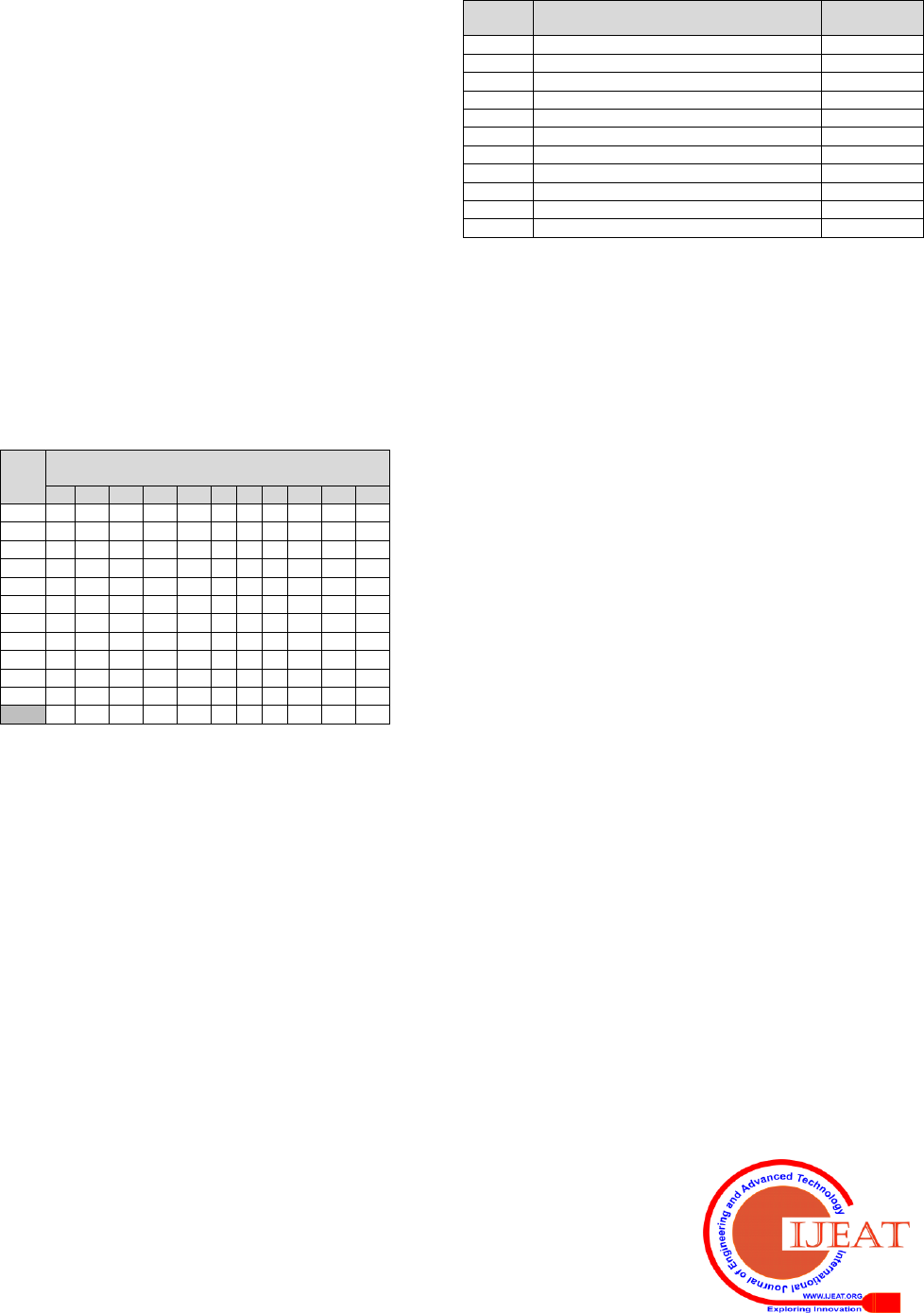
Predicting Most Productive Requirements Elicitation Teams using MBTI Personality Traits Model
3812
Published By:
Blue Eyes Intelligence Engineering
& Sciences Publication
Retrieval Number: A9833109119/2019©BEIESP
DOI: 10.35940/ijeat.A9833.109119
Similarly, all other soft skills ranging from S01 to S11 have
been placed in this table just randomly without any priority
criteria or industry ranking.
III. MAPPING JOB DESCRIPTIONS WITH SOFT
SKILLS AND PERSONALITY TRAITS
Consider the table-3, in which industry demanded soft skills
have been mapped on industry demanded job descriptions
for requirements engineer/analyst. In this table, the columns
represent the different soft skills ranging from S01 up-to
S11 while rows represent the job descriptions ranging from
J01 up-to J11. The each job description has been analyzed
critically and the relevant soft skills have been mapped on it
to see about which skills are required to perform that job
description. For example, the table shows that soft skills of
S01 and S02 are required in requirements engineers to
perform their job task of J01 successfully. Similarly, the soft
skills of S03, S08 and S10 are required in requirements
engineers to perform their job task of J02. Similarly, all
other job descriptions ranging from J01 up-to J11 have been
critically analyzed and the soft skills ranging from S01 up-to
S11 have been mapped on them to find the most relevant
soft skills required by each job description.
Table-3: Mapping “Soft Skills” with “Job Descriptions”
for Requirements Analyst
JDs
Recommended “Soft Skills” for Requirements
Analysts By Software Industry
S1
S2
S3
S4
S5
S6
S7
S8
S9
S10
S11
J01
Y
Y
-
-
-
-
-
-
-
-
-
J02
-
-
Y
-
-
-
-
Y
-
Y
-
J03
Y
Y
-
-
-
-
-
-
-
-
-
J04
-
-
-
-
-
-
-
-
Y
Y
-
J05
-
-
Y
-
-
-
-
-
Y
Y
-
J06
Y
-
-
Y
-
-
-
-
-
-
Y
J07
Y
-
-
-
-
-
-
-
-
-
J08
Y
Y
-
Y
-
Y
-
Y
-
-
-
J09
-
Y
-
-
Y
-
-
-
-
-
-
J10
-
-
-
Y
Y
-
Y
-
-
-
-
J11
-
-
-
Y
Y
-
-
-
-
-
-
5
4
2
4
3
1
1
2
2
3
1
The last row of this table shows the total count/frequency of
appearance of each soft skill in performing all these 11 job
descriptions by requirements engineers. According to this
table, the soft skill of S01 is required to perform five
different job tasks of requirements engineer out of total 11
job tasks. Similarly, the soft skill of S02 is required to
perform four different job tasks of requirements engineer
out of total 11 job tasks. Similarly, all other soft skills
ranging from S01 up-to S11 have been analyzed and
mapped on different job tasks ranging from J01 up-to J11
and in the last row the total count/frequency of appearance
of each soft skill in these 11 job tasks have been shown.
Consider the table-4, which initially describes the
personality characteristics for each of above soft skills
ranging from S01 up to S11 and later on, it maps these
characteristics on MBTI personality traits [11, 12, 13]. For
example, the soft skill of S01 demonstrates the personality
characteristics of “Social and Talkative”. It means that a
persona having these characteristics of being social and
talkative would have soft skill of S01. Similarly, the soft
skill of S02 demonstrates the personality characteristics of
“Social and Talkative”. It means that a persona having these
characteristics of being social and talkative would have soft
skill of S02. Similarly, all soft skills ranging from S01 up to
S11 have been mapped on their relevant personality
characteristics.
Table-4: Relating “Soft Skills” with “MBTI Traits”
After mapping these soft skills on their relevant personality
characteristics, the remapping of these personality
characteristics have been performed to find out their
relevant MBTI personality traits. For example, the soft skill
S01 is initially mapped to its relevant personality
characteristics of being social and talkative and then these
personality characteristics have been mapped to MBTI traits
to conclude that extraversion personality contains these
characteristics. The table shows that S01 is related to
Extraversion, S02 is related to Feeling, S03 is related to
Thinking, S04 is related to Perceiving, S05 is related to
Judging, S06 is related to Feeling, S07 is related to Intuition,
S08 is related to Feeling, S09 is related to Intuition, S10 is
related to Sensing and S11 is related to Perceiving.
IV. PREDICTING SUITABLE PERSONALITIES FOR
REQUIREMENTS ENGINEERING TEAMS
Consider the table-5, which shows the total frequency
distribution and ranking of personality traits for requirements
engineer. From the table it can be seen that, soft skill S01
appeared in five different job descriptions for requirements
engineer while it relates to extraversion personality trait.
Similarly, the soft skills S02 and S04 appeared in four
different job descriptions for requirements engineer while
they relate to feeling and perceiving personalities. Similarly,
all soft skills ranging from S01 up to S11 have been placed in
a descending order from left to right along with their related
personality trait. In the second part of this table, total
frequency of appearance of each personality traits have been
calculated by taking union of same personality traits
occurring through different soft skills. These personality
traits have been placed in this lower part of table from left to
right in a descending order. Hence, extraversion personality
trait has been found with maximum frequency of appearance
of 6/11 for requirements engineer. Similarly, the feeling
personality trait has been found with next lowest frequency of
appearance of 5/11.
Soft
Skills
Related Personality Characteristics
Related
MBTI Trait
S01
Sociable, Talkative
Extraversion
S02
Sociable, Talkative
Feeling
S03
Solution Oriented, Analytical
Thinking
S04
Enquiring, Curious, Willing to Learn
Perceiving
S05
Organized, Responsible, Business like
Judging
S06
Helpful, Unselfish, Cooperative
Feeling
S07
Imaginative, Intelligent, Analytical
Intuition
S08
Sociable, Interactive
Feeling
S09
Creative, Inventive, Innovative
Intuition
S10
Analytical, Investigative
Sensing
S11
Curious, Willing to Learn
Perceiving
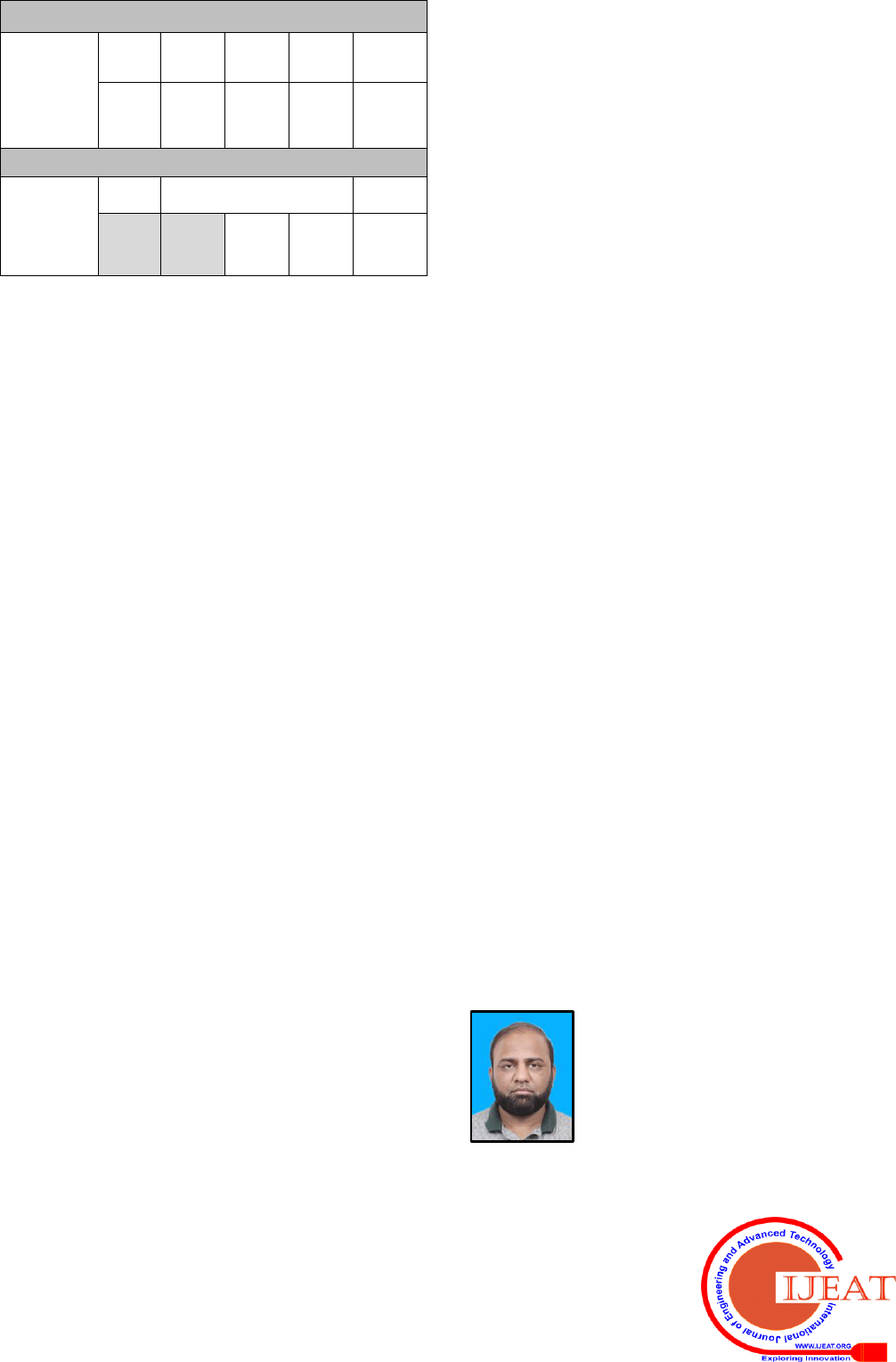
International Journal of Engineering and Advanced Technology (IJEAT)
ISSN: 2249 – 8958, Volume-9, Issue-1, October 2019
3813
Published By:
Blue Eyes Intelligence Engineering
& Sciences Publication
Retrieval Number: A9833109119/2019©BEIESP
DOI: 10.35940/ijeat.A9833.109119
Table-5: Ranking of Personality Traits for
Requirements Analyst
Similarly, all other traits have been placed in a descending
order from left to right for requirements engineer. It can be
seen from this table-5 that extraversion and feeling
personality traits are the most dominating and appropriate
personality traits for job of requirements engineer as
compared to other traits. Hence, the companies should try to
hire those software engineers for task of requirements
engineering who have personality traits of extraversion and
feeling as most dominating traits. Persons with these traits
have better potential to perform system analysis and
requirements gathering tasks. It has also been highlighted by
many other researchers who have worked on personality
aspects of software engineers according to software
development tasks [14, 15].
V. CONCLUSION
The requirements elicitation process involves the most
frequent collaborations and cross-sectional interactions
among requirements elicitation team members and product
stakeholders, during their information sharing conversations.
The collaborative nature of this process defines its primary
dependency on the personality traits of its participants. If we
use the personality assessment models at an early stage of
requirements elicitation process to select the most suitable
productive software engineers as elicitation team members,
it can contribute positively for improvement of requirements
elicitation process. This article attempts to devise a method
for prediction of personality traits of requirements elicitation
team members using MBTI personality assessment tool
through a systematic approach. The results obtained show
that extraversion and feeling personalities are most suitable
personalities to perform requirements elicitation task during
requirements engineering phase. These results are very
much in accordance with already obtained results by
research community involved in the assessment of
personality factors and traits for software engineers. The
alignment of obtained results justifies the originality and
authenticity of personality prediction method used in this
article for assessment of personality traits of software
engineering roles. The used personality prediction method
can be integrated in requirements elicitation tools to
nominate the most suitable requirements elicitation team
members at early stages of requirements engineering phase.
REFERENCES
1. Lane, S., O’Raghallaigh, P., & Sammon, D. (2016). Requirements
gathering: the journey. Journal of Decision System, 25 (sup1), 302-
312.
2. Wong, L. R., Mauricio, D. S., & Rodriguez, G. D. (2017). A
Systematic Literature Review about Software Requirements
Elicitation. Journal of Engineering Science and Technology, 12(2),
296-317.
3. Niknafs, A., & Berry, D. (2017). The impact of domain knowledge on
the effectiveness of requirements engineering activities. Empirical
Software Engineering, 22(1), 80-133.
4. Yilmaz, M., O’Connor, R. V., Colomo-Palacios, R., & Clarke, P.
(2017). An examination of personality traits and how they impact on
software development teams. Info and Software Techn, 86, 101-122.
5. Cruz, S., da Silva, F. Q., & Capretz, L. F. (2015). Forty years of
research on personality in software engineering: A mapping study.
Computers in Human Behavior, 46, 94-113.
6. Barroso, A. S., Madureira, J. S., Melo, F. S., Souza, T. D., Soares, M.
S., & do Nascimento, R. P. (2016, April). An evaluation of influence of
human personality in software development: An experience report. In
Telematics and Information Systems (EATIS), 2016 8th Euro
American Conference on (pp. 1-6). IEEE.
7. Kosti, M. V., Feldt, R., & Angelis, L. (2016). Archetypal personalities
of software engineers and their work preferences: a new perspective for
empirical studies. Empirical Software Engineering, 21(4), 1509-1532.
8. Ribaud, V., & Saliou, P. (2015, September). Relating ICT
competencies with personality types. In European Conference on
Software Process Improvement (pp. 295-302). Springer, Cham.
9. Calefato, F., Lanubile, F., & Novielli, N. (2017, May). A preliminary
analysis on the effects of propensity to trust in distributed software
development. In Proceedings of the 12th International Conference on
Global Software Engineering (pp. 56-60). IEEE Press.
10. Capretz, L. F., & Ahmed, F. (2010). Making Sense of Software
Development and Personality Types. IEEE IT Professional Magazine,
12(1), 6.
11. Smith, E. K., Bird, C., & Zimmermann, T. (2016, May). Beliefs,
practices, and personalities of software engineers: a survey in a large
software company. In Proceedings of the 9th International Workshop
on Cooperative and Human Aspects of Software Engineering (pp. 15-
18). ACM.
12. Soomro, A. B., Salleh, N., Mendes, E., Grundy, J., Burch, G., &
Nordin, A. (2016). The effect of software engineers’ personality traits
on team climate and performance: A Systematic Literature Review.
Information and software technology, 73, 52-65.
13. Jia, J., Zhang, P., & Zhang, R. (2015, September). A comparative study
of three personality assessment models in software engineering field.
In Software Engineering and Service Science (ICSESS), 2015 6th
IEEE International Conference on (pp. 7-10). IEEE.
14. Ming, T. M., Jabar, M. A., Wei, K. T., & Sidi, F. (2015, December). A
preliminary study of personality traits and their influence on software
piracy. In Software Engineering Conference (MySEC), 2015 9th
Malaysian (pp. 252-258). IEEE.
15. Kanij, T., Merkel, R., & Grundy, J. (2015, May). An empirical
investigation of personality traits of software testers. In Proceedings of
the Eighth International Workshop on Cooperative and Human Aspects
of Software Engineering (pp. 1-7). IEEE Press.
AUTHORS PROFILE
Mr. M. Aqeel Iqbal is a PhD student at Kulliyah of
Information and Communication Technology
(KICT), International Islamic University, Malaysia.
He did his MS in Computer Software Engineering
from National University of Sciences and
Technology (NUST), Pakistan. He is working as an
assistant professor at department of software
engineering, faculty of engineering & information technology, foundation
university Islamabad, Pakistan. He is author of many research articles
published in journals and conferences of international repute. His area of
research is software engineering.
Frequency Distribution Assessment of Personality Traits
Frequency
Distribution
of Soft
Skills &
Their
Personality
Traits
S1 = 5
S2 = 4
S4 = 4
S5 = 3
S10 = 3
S3 = 2
S8 = 2
S9 = 2
S6 = 1
S7 = 1
S11 = 1
E
F, P
J, S
T, F, I
F, I, P
Ranking of Personality Traits
Accumulated
Frequency
Based
Ranking of
Personality
Traits
Highes
t Trait
Intermediate
Traits
Lowest
Trait
E
(6/11)
F
(5/11)
P
(4/11)
J (3/11)
S (3/11)
I (3/11)
T
(2/11)
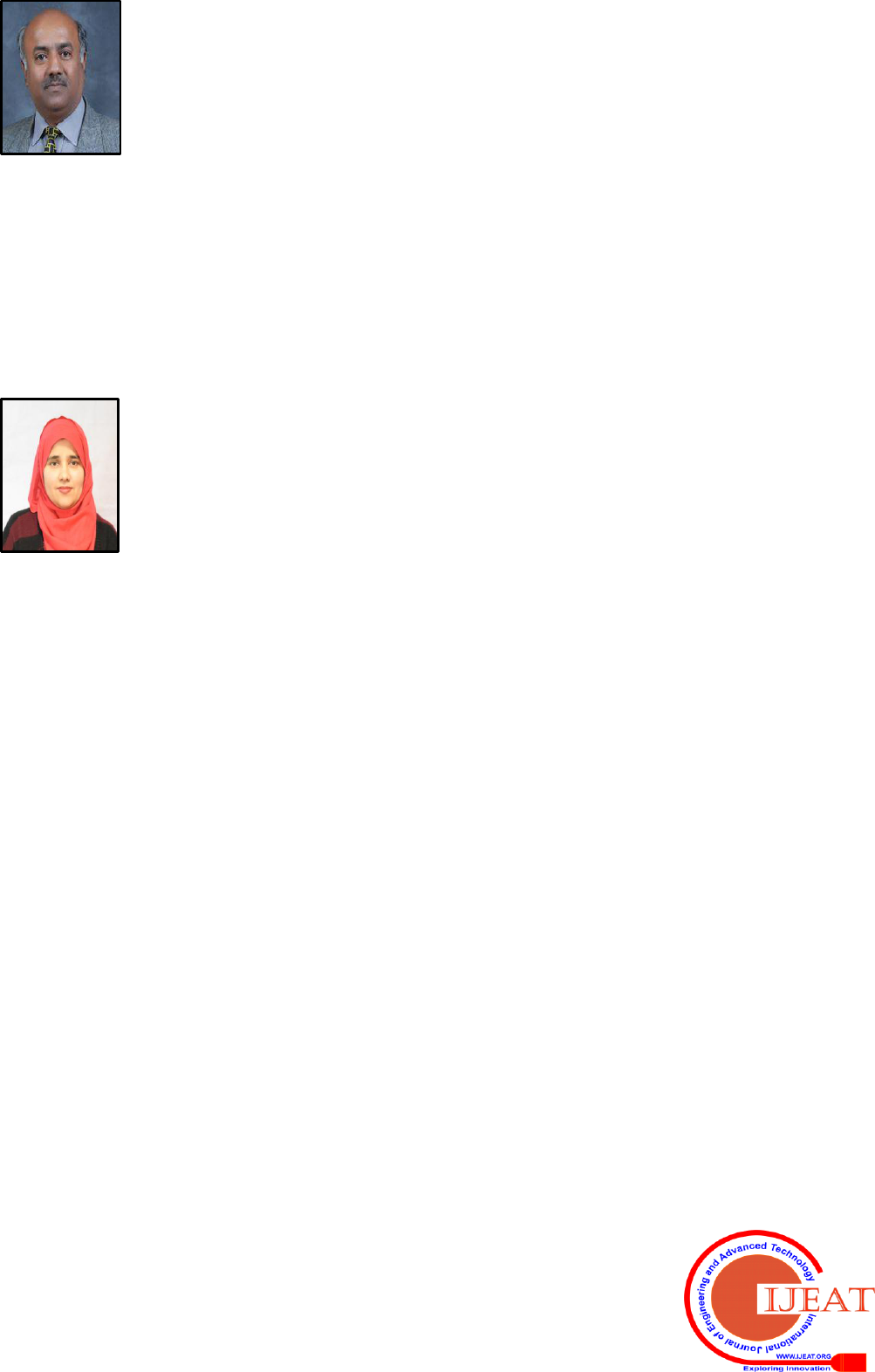
Predicting Most Productive Requirements Elicitation Teams using MBTI Personality Traits Model
3814
Published By:
Blue Eyes Intelligence Engineering
& Sciences Publication
Retrieval Number: A9833109119/2019©BEIESP
DOI: 10.35940/ijeat.A9833.109119
Dr. Asadullah Shah is working as a Full Professor
at the Kulliyyah of ICT, International Islamic
University Malaysia (IIUM) before joining IIUM,
he worked as Head of Telecommunication
Engineering & Management department, IoBM
Karachi Sindh, Dean Faculty of Computer and
Management Sciences, Isra University Hyderabad
Sindh and Head of Telecommunication Engineering
and IT, Sukkur IBA, Sindh-Pakistan. He did his
PhD from university of Surrey UK, in 1998, with specialization in
Multimedia Communication. He started his academic carrier from
University of Sindh Jamshoro, Pakistan, in 1986 as a lecturer. He has
published 250 research articles in highly reputable international and
national journal in the fields of computers, communication and IT. In
addition, he has published 22 books in his 43 years of academic carrier.
Currently he is supervising great number of postgraduate PhD students,
working in multiple disciplines, such social media and behavior modelling,
e-learning and computer game based learning for adults and school
children. He has been invited as keynote speaker, general chair for multiple
IEEE conferences such as ICETAS and ICIRD held every year in various
parts of the world.
Ms. Tehmina Karamat ullah Khan is a PhD
student at Kulliyah of Information and
Communication Technology (KICT), International
Islamic University, Malaysia. She is also working as
an assistant professor at department of software
engineering, faculty of engineering & information
technology, foundation university Islamabad,
Pakistan. She is author of many research articles
published in international journals and conferences
of good repute. She has a working experience of more than fifteen years in
academics and industry.
